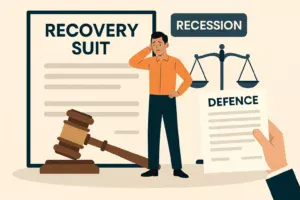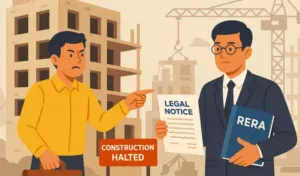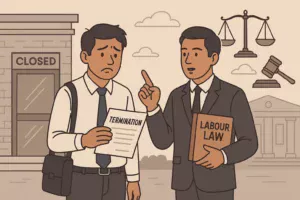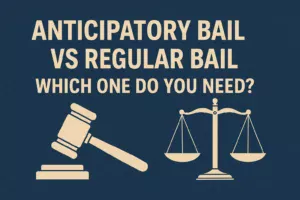The Detailed Procedure will explain to you How To file an RTI application. :-
Have you thought about how much time filling of RTI takes? if not start guessing how much time RTI filling takes
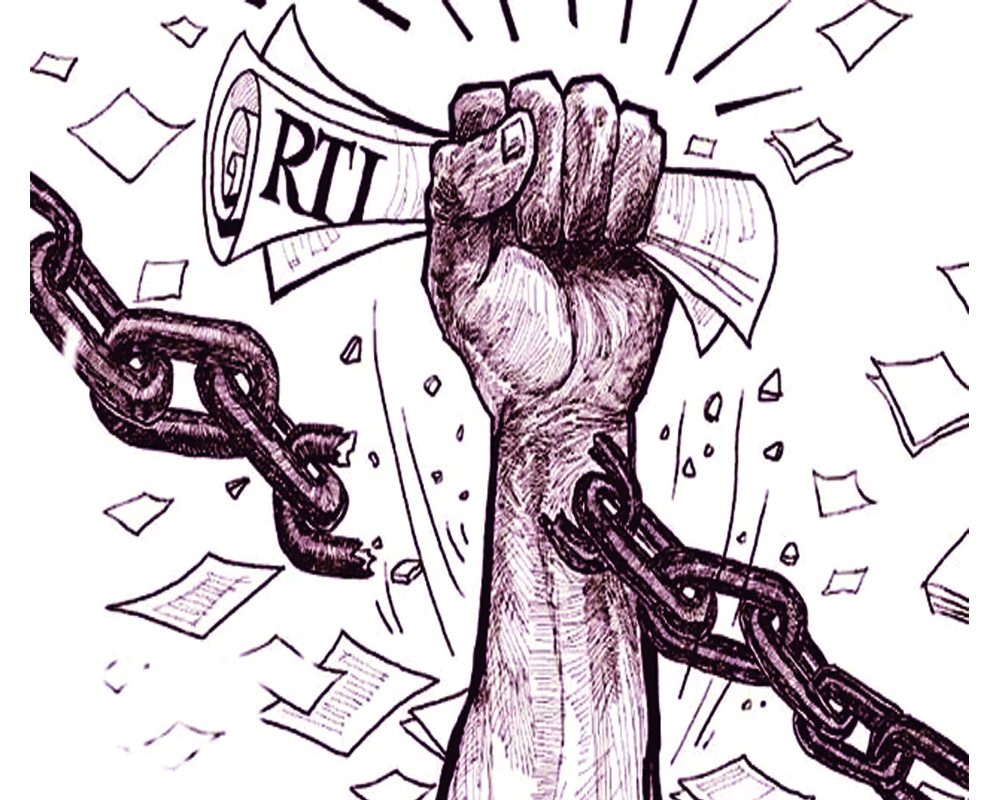
No, you are wrong it’s not 10-20-30 minutes or 1 Hour but it’s hardly 5 minutes or less.
The filling of RTI is a question in the mind of every individual. But the filling of RTI is very easy.
it’s even simpler than even your thoughts hardly 5 minutes it takes to File an RTI application
The Right to Information (RTI) Act is a law that gives Indian citizens the right to request information from any public authority. It is an important tool for promoting transparency and accountability in government. If you want to request information from a public authority, you can file an RTI application. Here’s how to do it:
There are two ways you can file RTI 1st is via an advocate or legal expert and 2nd is self-filling of the RTI Application. Self-filling RTI is basically free you just have to read this article to know how to file RTI.
- Filling via legal experts/or advocates:– The advocates/legal experts have knowledge of law so they can also site judgments in the RTI application. It has been observed that the RTI application itself makes a lot of difference and the public authority will answer the RTI Application faster. But here advocate or legal expert can charge you some drafting fees for getting the RTI application ready Click here to get it drafted by professionals
- Self-filling of RTI: If you still want to file yourself you can also do it for free It can be done after following the steps mentioned below:-
the first step is always figuring out the right public information officer or assistant public information officer on which you want to File the RTI application.
Who is the public information Officer?
The Public information officers are officers designated by the public authorities in all administrative units or offices under it to provide information to the citizens requesting information under the Act. The public information officers are supposed to supply you with information under provisions of the RTI ACT. They are the first authority on whom the RTI application is being made.
Role of Legal Advisor in filling RTI
Lawyers/advocates/legal advisors help you to make RTI filling complex legal procedures simple, they help to make formal legal RTI complaints against other people or any entity/government agencies. You can contact your advocate or me i.e Vishal Saini advocate I can help you to get RTI drafted click here to contact Vishal Saini or call me at +91-9991188899.
How to file RTI application
The Right to Information Act (RTI ACT), 2005 prescribes a simple and straightforward procedure for obtaining any information under provisions of the act as it requires :
filling out anything that always begins with writing an RTI application is not an exception.
A. Writing an application in a simple format and specifying the particulars of the information sought. ( You can also mention that you need a certified copy or an uncertified copy). A sample format to file RTI in easy steps is given below:-

As in the above-said example, the RTI application can be filled out easily by The public information officer of a particular area from where we have to get information. Here in the above-said example, we have to get information from the police that’s why the public information officer was the Deputy superintendent of police of a particular area ( in which you have to move the RTI application}
Then next what do you have to do think yourself? yes, you are right now you can ask for information in the manner provided in the next image.
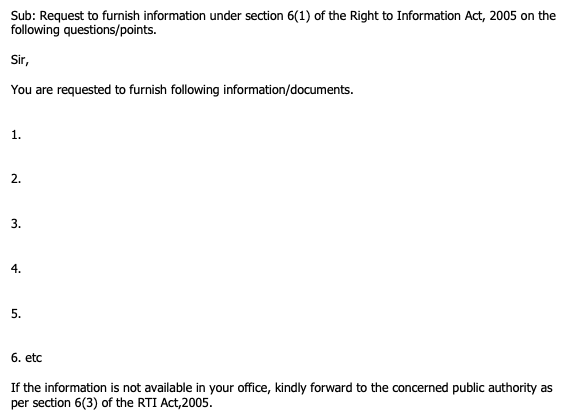
B. We have to also attach a payment of rupees 50 with the RTI application and those 50 rupees can be attached via demand draft also. So, Submitting the proof of payment of the application fee is around (50 INR through Indian postal order). It is very important in RTI applications otherwise public authorities can reject RTI applications or can ask you to attach the required fees which will waste your time. Y
the example of point B is given for payment of RTI application is below:-
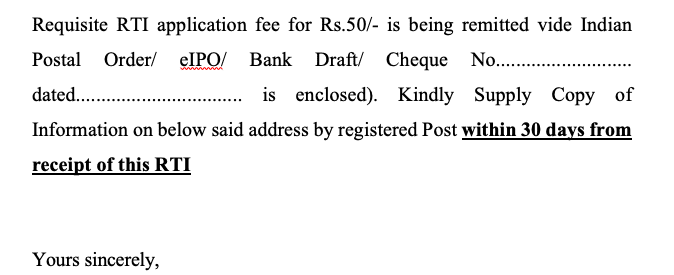
This is kind of the final step now your RTI is almost done. After this step, you just need to enter your name and address so that the Public information officer on which you want to file the RTI application so that public information officer can reply to you regarding your RTI application in the given time.
Click Here to know who is public information officer
further, you can also make an acknowledgment section which is optional but can be used for your record for the RTI application.
An example of the acknowledgment section is as below

C. Sending the application to the respective Public Information Officer or Assistant Public Information Officer.
The essential requirements of an application filed under the RTI Act are:
(i) The applicant who is making an application for RTI should be a citizen of India.
(ii) The application must contain all the particulars of the information sought.
(iii) The evidence of payment of the application must be attached In every RTI application. ( as discussed in point number B)
(iv) The address of the applicant should be available and mentioned in the RTI application so that the public information officer can use the address for sending a reply. Personal details except those necessary for contacting an applicant are neither required to be mentioned nor can be called for by the PIO.
It is important to note that there are some types of information that are exempt from disclosure under the RTI Act. This includes information that relates to national security, commercial confidence, and personal privacy. If the public authority decides that the information you have requested falls into one of these categories, they may refuse to disclose it.
Importance of filling RTI Application
In India, many public authorities don’t do their job so there is a need for transparency in the department in every sector.
The Main Aims of the RTI Act are to provide clarity of the information to the citizens of India, to contain corruption, and to promote accountability in the working of every public authority. So that everyone can see the transparency which will help in the smooth functioning of government.
You can also read :-The Importance of a Thoughtful Property Will


